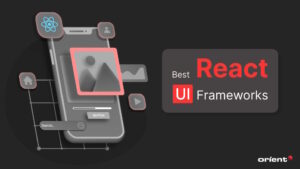In this comprehensive guide, we’ll explore top WordPress speed optimization techniques that will help you stay ahead of the curve and ensure your site is faster than ever in 2025.
Importance of Website Speed
Why Speed Matters for SEO
Google has made it clear that website speed plays a significant role in SEO rankings. A faster website enhances user experience, leading to longer visit durations and lower bounce rates. These metrics contribute positively to your SEO, making it easier to rank higher in search results.
User Experience and Conversion Rates
WordPress Speed Benchmarks for 2025
- Page Load Time: Aim for under 2 seconds on both mobile and desktop.
- Time to First Byte (TTFB) : Should be under 200 milliseconds.
- Largest Contentful Paint (LCP): Less than 2.5 seconds.
1. Optimize Images for Faster Load Times
- Compress Images : Use tools like TinyPNG or ShortPixel to reduce image sizes without sacrificing quality.
- Use Next-Gen Formats : Convert images to WebP, a next-gen image format that’s both high-quality and lightweight.
- Enable Lazy Loading : Lazy loading ensures images only load when they’re about to enter the user’s viewport, reducing initial load time.
2. Choose a Fast and Reliable Web Host
Your hosting provider plays a huge role in determining your website’s speed. In 2025, it’s essential to choose a fast and reliable web host that can meet modern speed demands.
Key Factors to Evaluate When Choosing a Web Hosting Service:
Server Response Time: Look for hosts that offer a TTFB under 200 milliseconds.
- Scalability: Ensure your host can handle traffic spikes without slowing down.
- Speed-Enhancing Features: : Features like SSD storage, built-in caching, and server-side optimizations are a must.
Some of the best web hosts for speed in 2025 include SiteGround, WP Engine, and Kinsta.
3. Utilize a Content Delivery Network (CDN)
A Content Delivery Network (CDN) distributes your site’s assets across a network of global servers, delivering content from the closest server to your user. This minimizes latency and accelerates loading times, particularly for users accessing from abroad.
Top CDN Providers for WordPress in 2025:
- Cloudflare: Free plan available, excellent for speed and security.
- KeyCDN: Affordable with a pay-as-you-go pricing model.
- BunnyCDN: Known for its performance and budget-friendly pricing.
4. Leverage Caching Solutions
Caching stores static copies of your website so that when users visit, the server doesn’t need to reprocess every request. This can significantly reduce load times.
Types of Caching:
- Browser Caching: Stores site data in the user’s browser, so returning visitors experience faster load times.
- Server-Side CachingProcesses fewer dynamic requests by serving cached versions of pages.
Popular caching plugins for WordPress in 2025 include WP Rocket, W3 Total Cache, and LiteSpeed Cache.
5. Minify CSS, JavaScript, and HTML
Minification refers to the process of removing unnecessary characters from your site’s code (such as spaces, line breaks, and comments) without affecting its functionality. This minimizes the size of your CSS, JavaScript, and HTML files, enabling quicker loading times.
Best Tools for Minification:
- Autoptimize : A popular WordPress plugin that minifies your site’s scripts and stylesheets
- Fast Velocity Minify : Another excellent plugin that’s easy to use and highly effective.
6. Update Your WordPress Core, Themes, and Plugins
Outdated software can cause slowdowns, security vulnerabilities, and performance issues. Keep your WordPress core, themes, and plugins up to date to guarantee optimal performance and safeguard against security threats.
Benefits of Staying Updated:
- Improved Performance : Developers are constantly releasing updates that optimize performance.
- Enhanced Security: Updates often include patches for known vulnerabilities that could otherwise be exploited.
7. Implement Database Optimization
As your website grows, your database can become bloated with unnecessary data, slowing down your site. Regular database optimization can help keep your site running smoothly.
How to Optimize Your Database
- Clean Up Revisions: Reduce the quantity of post revisions saved in your database.
- Enhanced Security: Updates often include patches for known vulnerabilities that could otherwise be exploited.
- Use Plugins: Plugins like WP-Optimize can automatically clean and optimize your database.
8. Use a Lightweight WordPress Theme
Your website’s speed can be significantly affected by the theme you select. It is important to choose a lightweight theme that prioritizes performance and avoids unnecessary bloat.
Top Lightweight Themes for 2025:
- Astra: Fast, lightweight, and highly customizable.
- GeneratePress: Recognized for its swift performance and operational efficiency
- Neve: A super lightweight theme optimized for both speed and flexibility.
9. Limit the Use of Plugins
Although plugins enhance the functionality of your WordPress site, excessive use can lead to decreased performance.. Limit your use of plugins to only the essentials, and avoid plugins that duplicate functionality or introduce unnecessary bloat.
Tips for Managing Plugins:
- Regularly Audit Your Plugins : : Deactivate and delete any plugins you’re not actively using.
- Use Multipurpose Plugins: : Instead of multiple single-use plugins, choose plugins that serve multiple purposes (like Jetpack).
10. Enable Gzip Compression
Implementing Gzip compression helps to reduce the size of your website’s files, which in turn accelerates loading speeds. When Gzip is enabled, it can compress HTML, CSS, and JavaScript files by up to 70%, leading to significantly quicker load times.
How to Enable Gzip Compression:
- Many caching plugins, like WP Rocket and W3 Total Cache, have options to enable Gzip compression.
- Alternatively, you can enable Gzip compression via your site’s .htaccess file or by using a CDN.
11. Remove Unnecessary Code and Scripts
Over time, your site may accumulate unnecessary code or scripts that slow it down. It’s crucial to regularly audit your site and remove any unused or unnecessary code.
Tools for Detecting Unused Code:
- Asset CleanUp: This plugin helps you unload unused scripts and styles on specific pages.
- Query Monitor: Helps detect slow queries and performance bottlenecks caused by excess code.
12. Reduce HTTP Requests
Every time a page is loaded, your site sends HTTP requests to the server. The more requests made, the longer the page will take to load. Reducing the number of requests can help improve speed.
How to Reduce HTTP Requests:
- Combine CSS and JS Files: Tools like Autoptimize can combine files to reduce the number of HTTP requests.
- Limit External Resources: Avoid using too many external fonts, icons, or tracking scripts that increase load times.
13. Implement Lazy Loading for Videos and iFrames
Like images, videos and iFrames can slow down your page load times. Lazy loading for these elements ensures they only load when visible in the user’s viewport.
How to Enable Lazy Loading:
- Many themes and plugins, such as WP Rocket, offer built-in lazy loading for videos and iFrames.
- Alternatively, you can use plugins like Lazy Load by WP Rocket or Lazy Load for Videos.
14. Prioritize Above-the-Fold Content
Prioritizing above-the-fold content ensures that the content users see first loads quickly, improving the perceived load time. You can achieve this by deferring non-essential scripts and ensuring critical content is loaded first.
15. Regular Speed Monitoring and Maintenance
Optimizing your site for speed is not a one-time task—it requires ongoing monitoring and maintenance. Regularly test your site’s performance and address any issues that arise.
Best Tools for Monitoring Speed:
By implementing these WordPress speed optimization techniques in 2025, you’ll not only enhance your website’s performance but also provide a better experience for your visitors, improve your search engine rankings, and ultimately increase your conversions. Stay ahead of the competition by keeping your site lightning fast!









